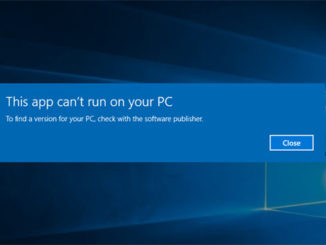Windows 10 is the latest operating system from Microsoft which is gaining momentum in terms of acceptance level among users worldwide, according to recent reports more than 200 million PCs have upgraded to Windows 10 already in just six months. This is no doubt a pretty impressive figure but still Windows 10 has a long way to go before it catches up with existing machines running on Windows 7 which is arguably the most popular and used of all Microsoft operating systems to date. Many are still skeptical about migrating to Windows 10 from much beloved Windows 7, catastrophic Windows 8 versions are partly to be blamed for this reticence, but after extensive testing we can say with confidence that Windows 10 is worth the upgrade or at least deserves to be given a chance. Luckily due to Microsoft’s universal file system that permits running multiple operating systems on one PC, you can dual boot Windows 7 & Windows 10 on one PC or laptop. With dual boot facility you can enjoy the best of both worlds and test Windows 10 for yourself rather than taking some else’s words for it all the while using Windows 7 as well before deciding to upgrade to Windows 10 for good. In this post we will show you how to use both Windows 7 and Windows 10 on one PC.
Some prefer to have more than one operating system installed on their PCs, motives can vary depending on individual user requirements; sometimes programs or applications are only optimized or designed to run on particular software package, or some still would want to test Windows 10 without leaving Windows 7 before deciding whether to move completely to the new OS or not. Dual booting ability of Windows OS makes this task manageable even for non-experts.
This method below can be used for Windows 8 & Windows 8.1 as well. You can dual run Windows 10 with both Windows 7 or Windows 8 by following instruction given in the following section.
How to dual boot Windows 10 with Windows 7 or Windows 8:
First and foremost, make sure to that you have a copy of Windows 10 OS burned onto USB flash drive or DVD. Windows 10 ISO is available for download on Microsoft’s website click here for downloading Windows 10 ISO file, follow instructions regarding how to activate Windows 10 copy. In order to turn ISO file into bootable version use Windows USE/DVD Download Tool. One more thing, before going ahead with dual boot process please make certain that you have backed-up all important data on an external storage device as the hazard of data loss is ever present.
Create Partition
Check you hard drive status to see that enough space is available on it before installing Windows 10 bootable version via USB/DVD. In most cases, Windows 10 requires anywhere between 20 to 25GB of primary hard disk space. If PC hard disk is running low on space then delete unwanted files to recover needed space, you can use CCleaner for deleting cookies, temporary internet files and junk that stack up on hard disk and devour vital space on it. Here’s how you can create PC partition for dual boot.
- Back up existing Windows files and data on secondary storage device.
- Press Windows Key + R open Windows Disk Management utility.
- A new box will open, type diskmgmt.disc and hit enter.
- Another Window presenting snapshot of PC hard disk partition will open, select drive where you can want to install new Windows 10, mostly it’s primary C: drive.
- Right-click on C: drive and click shrink Volume option from the context menu, this opens a window displaying partition size and where you can adjust hard disk space required for installing Windows 10. For example, for creating 30GB space enter 3000 in the field named Enter the amount of space to shrink in MB and hit shrink button.
This concludes the first step of dual booting process. Now follow instructions below for moving on the second and final phase of the method.
- Connect USB drive with the USB port or place DVD in DVD drive, depending where you saved Windows 10 ISO bootable file.
- Reboot PC to initiate the installation process.
- If Windows fails to load installation process, enter BIOS for starting installation from there by restarting PC and repeatedly hitting Delete & F1 or F2, F5 and F12 keys. Different PCs have different keys for entering BIOS, check your PC manufacturer’s guide for it.
- At the start of the installation process a window showing installation choices will appear on the screen. Select Custom: Install Windows only (advanced) option.
- Now select the option Unallocated Space from the new panel window prompting Where do you want to install Windows?
- Hit Apply button which will start the partition process and click Next when the partition is complete.
- Windows 10 installation will commence immediately.
You will be asked to reboot PC after the installation, now when PC will turn back on there will be two OS options showing on the screen, one will be the existing Windows OS and other will be the new Windows 10. You will be able to access same Windows 7 or Windows 8 files and folders from Windows 10 as well.
For More, See: Top 5 Best ways to Speed up Windows 10 & How to Fix Nvidia Driver on Windows 10



